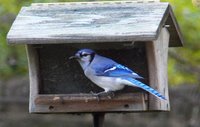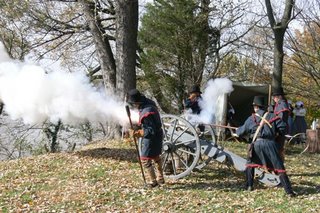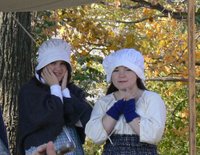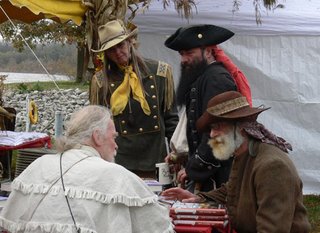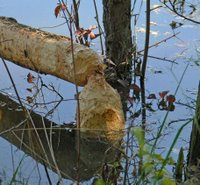The Ohio River is frozen 3 months of the year, flooded 3 months of the year, and dry the rest of the year. ........Ohio Riverboat Captain


Chuck Parrish worked for the U.S. Army Corps of Engineers as a historian for his entire career, and he loves talking about navigation on the Ohio River. The river was the Gateway to the West after the Revolution, and the Falls consisted of a series of rapids which dropped the river level by 26 feet in a little over two miles. If you were traveling in a dugout canoe or a flatboat, you could navigate around the sand bars, tree snags and other impediments along the way. However, when the first steamboats appeared in 1811, river commerce became much more important. Before the first canal was built around the Falls of the Ohio, a traveler's only choices were to risk "shooting the rapids" with skillful (and lucky) Falls pilots or to unload the boat and transport everything over land to the other side.

 Today, the Ohio River is really a series of lakes between dams built by the Corps of Engineers over the last 100+ years. Most of the original Falls are under water permanently by virtue of the McAlpine Dam. We can still get a flavor of what it must have been like in the early days of river travel when the river is in flood or drought. From the deck of the Interpretive Center, the wall on the other side is about 30 feet tall and we conduct hikes during the dry summer months to the fossil beds under that far wall. In the winter and spring, the gates are open on the dam and all the water comes pouring through and over the dam.
You might think that the high water doesn't look so bad. At least you wouldn't have to unload the boat to get through. But take a look at the flotsam coming downstream! Summer visitors ask how high the river gets. Sometimes we point to the mark on the sidewalk
Today, the Ohio River is really a series of lakes between dams built by the Corps of Engineers over the last 100+ years. Most of the original Falls are under water permanently by virtue of the McAlpine Dam. We can still get a flavor of what it must have been like in the early days of river travel when the river is in flood or drought. From the deck of the Interpretive Center, the wall on the other side is about 30 feet tall and we conduct hikes during the dry summer months to the fossil beds under that far wall. In the winter and spring, the gates are open on the dam and all the water comes pouring through and over the dam.
You might think that the high water doesn't look so bad. At least you wouldn't have to unload the boat to get through. But take a look at the flotsam coming downstream! Summer visitors ask how high the river gets. Sometimes we point to the mark on the sidewalk for the 1997 flood, the biggest flood in recent years. Sometimes we talk about the 1937 flood and point to the third floor windows in downtown New Albany. Usually, I just say to take a look at the large trees along the river bank. Those trees were stripped of bark and branches, traveled over the top of the dam, and were deposited along the shore, quite far from the banks they are standing on. A tree with a circumference of at least 12 feet arrived last spring and was carried away again by the next October. The river giveth and the river taketh away. Be respectful of the powerful river.
for the 1997 flood, the biggest flood in recent years. Sometimes we talk about the 1937 flood and point to the third floor windows in downtown New Albany. Usually, I just say to take a look at the large trees along the river bank. Those trees were stripped of bark and branches, traveled over the top of the dam, and were deposited along the shore, quite far from the banks they are standing on. A tree with a circumference of at least 12 feet arrived last spring and was carried away again by the next October. The river giveth and the river taketh away. Be respectful of the powerful river.


































